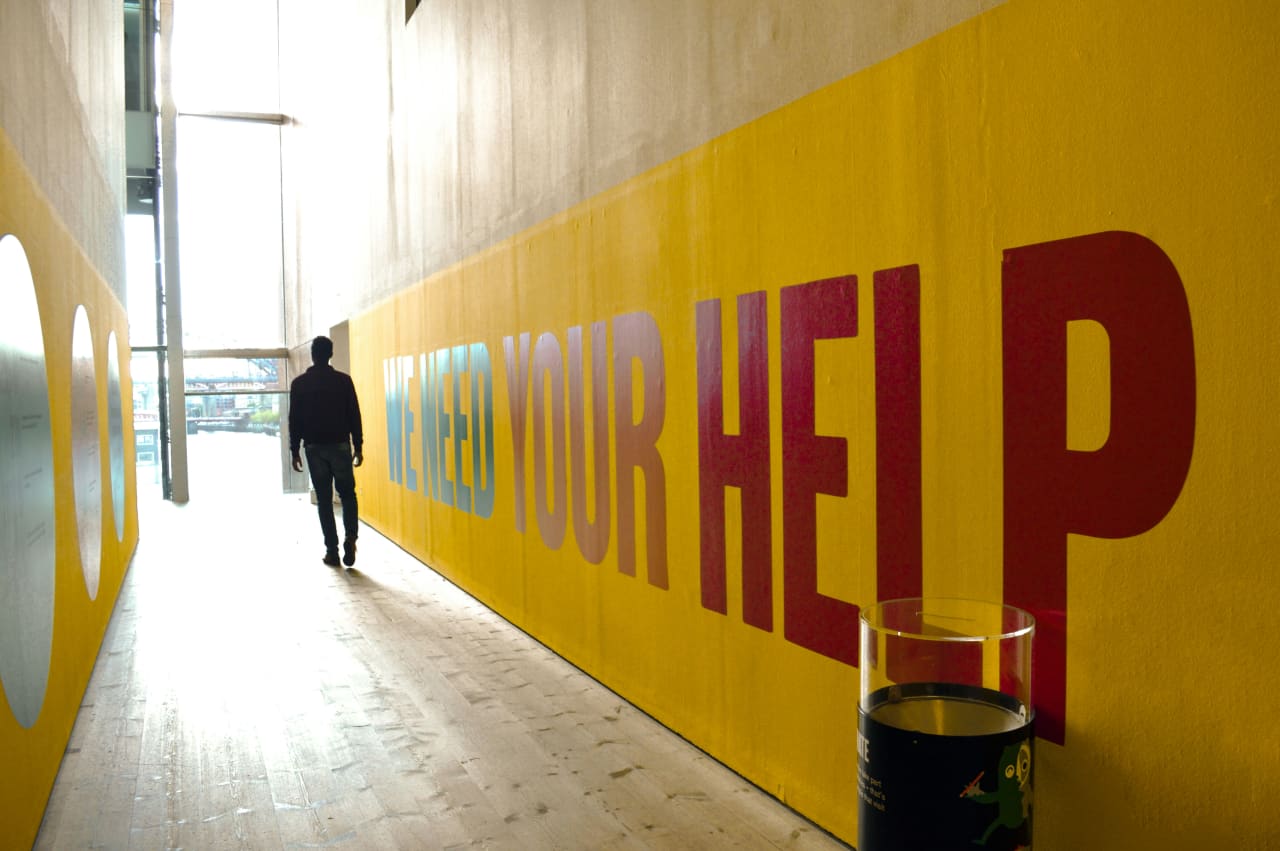Amid Geopolitical Concerns, Major Philanthropy Continues to Forge Ahead…Creatively
Even amid two international conflicts and an upcoming U.S. presidential election, some philanthropic leaders are optimistic about the direction of overall giving through 2024.
Penta spoke with heads of several non-profits and leading philanthropists to gauge whether charitable giving will continue its reported slump from 2023 or rebound alongside renewed interest in various political and economic issues.
“Contrary to what some might expect, philanthropy has had resilience in these times,” says Stacy Huston, executive director of Sixdegrees.org, a youth empowerment non-profit based in Virginia founded by actor Kevin Bacon in 2007.
Huston’s view echoes recent data from the biennial Bank of America Study of Philanthropy published last year, which found that while affluent giving is largely down, the value of the average philanthropic gift is up 19%, surpassing pre-pandemic levels.
The notion of what these gifts look like is changing, and is partially responsible for the growth. Philanthropy can be executed through more avenues than ever, whether through celebrity association, tech titans stewarding large endowments, or athletes using their platforms to advocate for and create meaningful change.
“The industry and movement is creating new models, and you want to get it right,” says Scott Curran, CEO of Chicago-based Beyond Advisers. “No one should take their foot off the gas pedal.”
Curran spent a number of years with the Clinton Foundation in its infancy before leaving in 2016 to open his own consultancy, which focuses on philanthropy strategy at the highest levels. Curran and his team work with celebrities, athletes, multi-generational family foundations, and other affluent givers who need guidance in directing their philanthropic efforts. It’s a growing area of interest: Over half of affluent households with a net worth between US$5 million and US$20 million have, or are planning to establish, “some kind of giving vehicle” within the next three years, according to the Bank of America report.
Corporate philanthropy, rather than individual giving, is the cornerstone of Marcus Selig’s work as chief conservation officer at the National Forest Foundation, a Congressionally chartered non-profit based in Montana responsible for protecting millions of acres of public lands.
“Our outlook is business as usual,” he says, advising that giving may slow down, but not enough for the foundation to change course.
Factors such as political polarisation in the U.S. and the wars in Eastern Europe and the Middle East are pushing nonprofits to consider their niche, and how they might work with other groups, both on the corporate and philanthropic levels, Selig says.
“It leads to a little more sharing on the ground in what needs to be done,” he adds.
Steve Kaufer , founder of Massachusetts-headquartered e-commerce giving platform Give Freely and founder of TripAdvisor, says that the economy has a much bigger role in election years, as he looks to build and grow something that can act as a “counterbalance.”
“There’s a trend towards democratisation, and acting collectively can lead to greater impact,” he says.
Kaufer’s new platform hopes to leverage the everyday philanthropist through online shopping dollars to benefit major charity partners like UNICEF and charity:water, who earn funds as shoppers choose an organisation to benefit through an online clickthrough process.
“Whether a good year or bad year, e-commerce will continue to keep growing,” he says. “Nobody doubts that.”
Whether a legacy foundation, corporation or individual, the political landscape this year is requiring some to exercise caution as they consider what their own charitable actions might be and how it could be viewed more broadly. For the personal philanthropist, every move is now scrutinised more closely. On the nonprofit side, entities are exercising more due diligence to understand if a specific donor aligns with their mission and that there aren’t any underlying issues that could cause greater pushback.
“You have to be able to walk the walk,” Huston says. “For example, we’ve had to turn down very large donor checks from corporations because there’s a Reddit stream calling them out on their human rights practices.”
She adds that even a routine charity activation could now be aligned with a political party, and that adds complexities to how a higher-profile organisation like Six Degrees can activate, especially as the film Footloose turns 40 in 2024 (which Bacon starred in).
“A lot of organisations and states want to align themselves with this feel good moment, and we should be able to stand side by side with everyone, but we have to be aware,” she says.
Another topic attracting donor interest today is mental health, an area that historically has been underfunded and under-resourced by philanthropy, according to Two Bridge partner Harris Schwartzberg, who has been closely linked to the mental health space for more than a decade.
Today, the issue for mental health nonprofits is less about resources and more about societal divisiveness and polarisation around the topic. There’s an “overwhelming demand” for solutions, but the space is in a “perfect storm” for the broader political issues to make things worse, Schwartzberg says.
In Curran’s opinion, the storms brewing are troublesome, but they are also creating new opportunities for corporate and personal giving. The current state of philanthropy is one of “dynamic, expansive, and blurred lines,” meaning a careful blending of targeted giving combined with an understanding of the broader geopolitical landscape could lead to a successful overall philanthropic strategy.
“There are a lot of headlines that distract, but shouldn’t,” he says. “2024 needs more serious philanthropists than ever.”
 Copyright 2020, Dow Jones & Company, Inc. All Rights Reserved Worldwide. LEARN MORE
Copyright 2020, Dow Jones & Company, Inc. All Rights Reserved Worldwide. LEARN MORE
This stylish family home combines a classic palette and finishes with a flexible floorplan
Just 55 minutes from Sydney, make this your creative getaway located in the majestic Hawkesbury region.
Continued stagflation and cost of living pressures are causing couples to think twice about starting a family, new data has revealed, with long term impacts expected
Australia is in the midst of a ‘baby recession’ with preliminary estimates showing the number of births in 2023 fell by more than four percent to the lowest level since 2006, according to KPMG. The consultancy firm says this reflects the impact of cost-of-living pressures on the feasibility of younger Australians starting a family.
KPMG estimates that 289,100 babies were born in 2023. This compares to 300,684 babies in 2022 and 309,996 in 2021, according to the Australian Bureau of Statistics (ABS). KPMG urban economist Terry Rawnsley said weak economic growth often leads to a reduced number of births. In 2023, ABS data shows gross domestic product (GDP) fell to 1.5 percent. Despite the population growing by 2.5 percent in 2023, GDP on a per capita basis went into negative territory, down one percent over the 12 months.
“Birth rates provide insight into long-term population growth as well as the current confidence of Australian families,” said Mr Rawnsley. “We haven’t seen such a sharp drop in births in Australia since the period of economic stagflation in the 1970s, which coincided with the initial widespread adoption of the contraceptive pill.”
Mr Rawnsley said many Australian couples delayed starting a family while the pandemic played out in 2020. The number of births fell from 305,832 in 2019 to 294,369 in 2020. Then in 2021, strong employment and vast amounts of stimulus money, along with high household savings due to lockdowns, gave couples better financial means to have a baby. This led to a rebound in births.
However, the re-opening of the global economy in 2022 led to soaring inflation. By the start of 2023, the Australian consumer price index (CPI) had risen to its highest level since 1990 at 7.8 percent per annum. By that stage, the Reserve Bank had already commenced an aggressive rate-hiking strategy to fight inflation and had raised the cash rate every month between May and December 2022.
Five more rate hikes during 2023 put further pressure on couples with mortgages and put the brakes on family formation. “This combination of the pandemic and rapid economic changes explains the spike and subsequent sharp decline in birth rates we have observed over the past four years,” Mr Rawnsley said.
The impact of high costs of living on couples’ decision to have a baby is highlighted in births data for the capital cities. KPMG estimates there were 60,860 births in Sydney in 2023, down 8.6 percent from 2019. There were 56,270 births in Melbourne, down 7.3 percent. In Perth, there were 25,020 births, down 6 percent, while in Brisbane there were 30,250 births, down 4.3 percent. Canberra was the only capital city where there was no fall in the number of births in 2023 compared to 2019.
“CPI growth in Canberra has been slightly subdued compared to that in other major cities, and the economic outlook has remained strong,” Mr Rawnsley said. “This means families have not been hurting as much as those in other capital cities, and in turn, we’ve seen a stabilisation of births in the ACT.”
This stylish family home combines a classic palette and finishes with a flexible floorplan
Just 55 minutes from Sydney, make this your creative getaway located in the majestic Hawkesbury region.






















